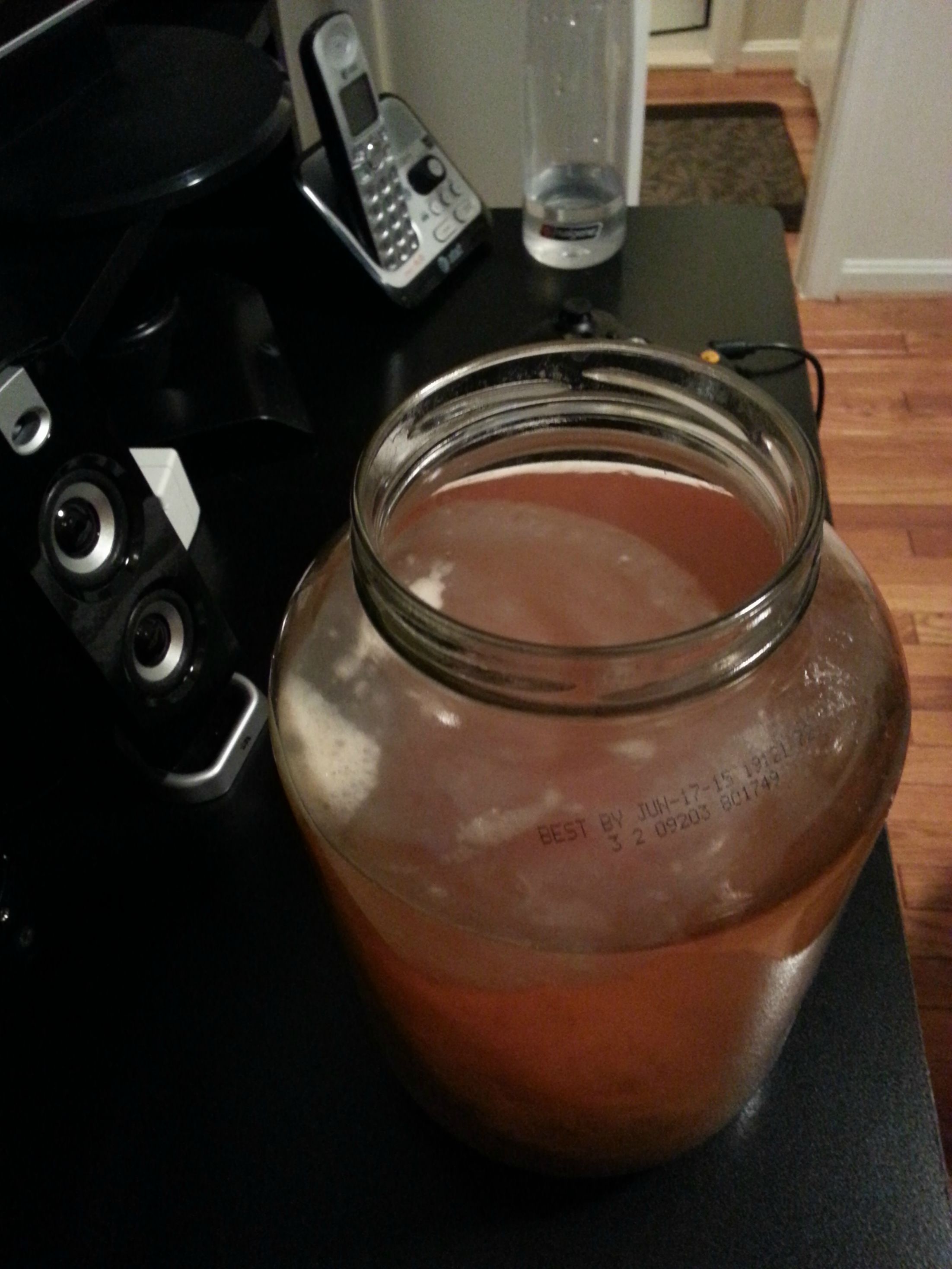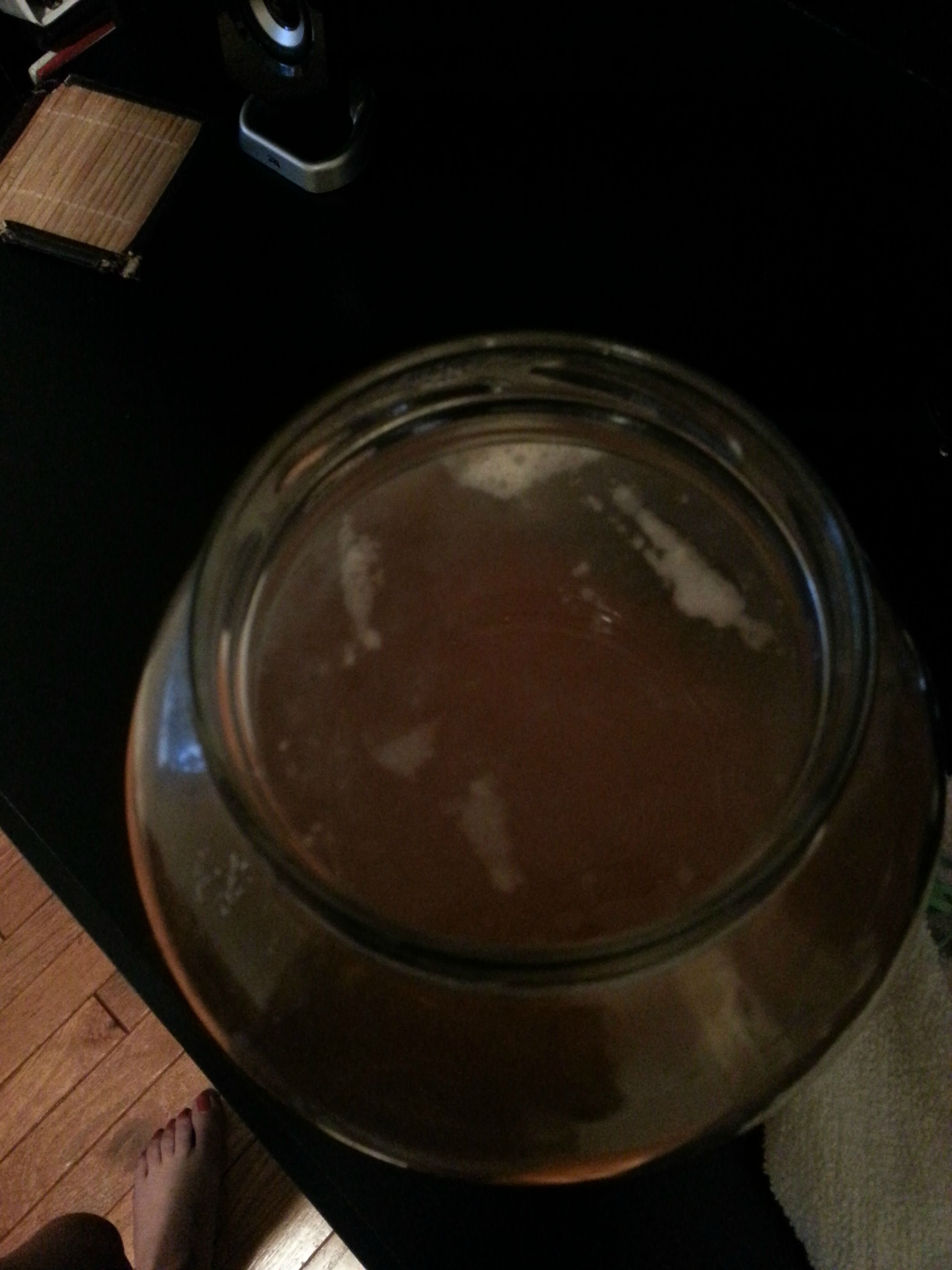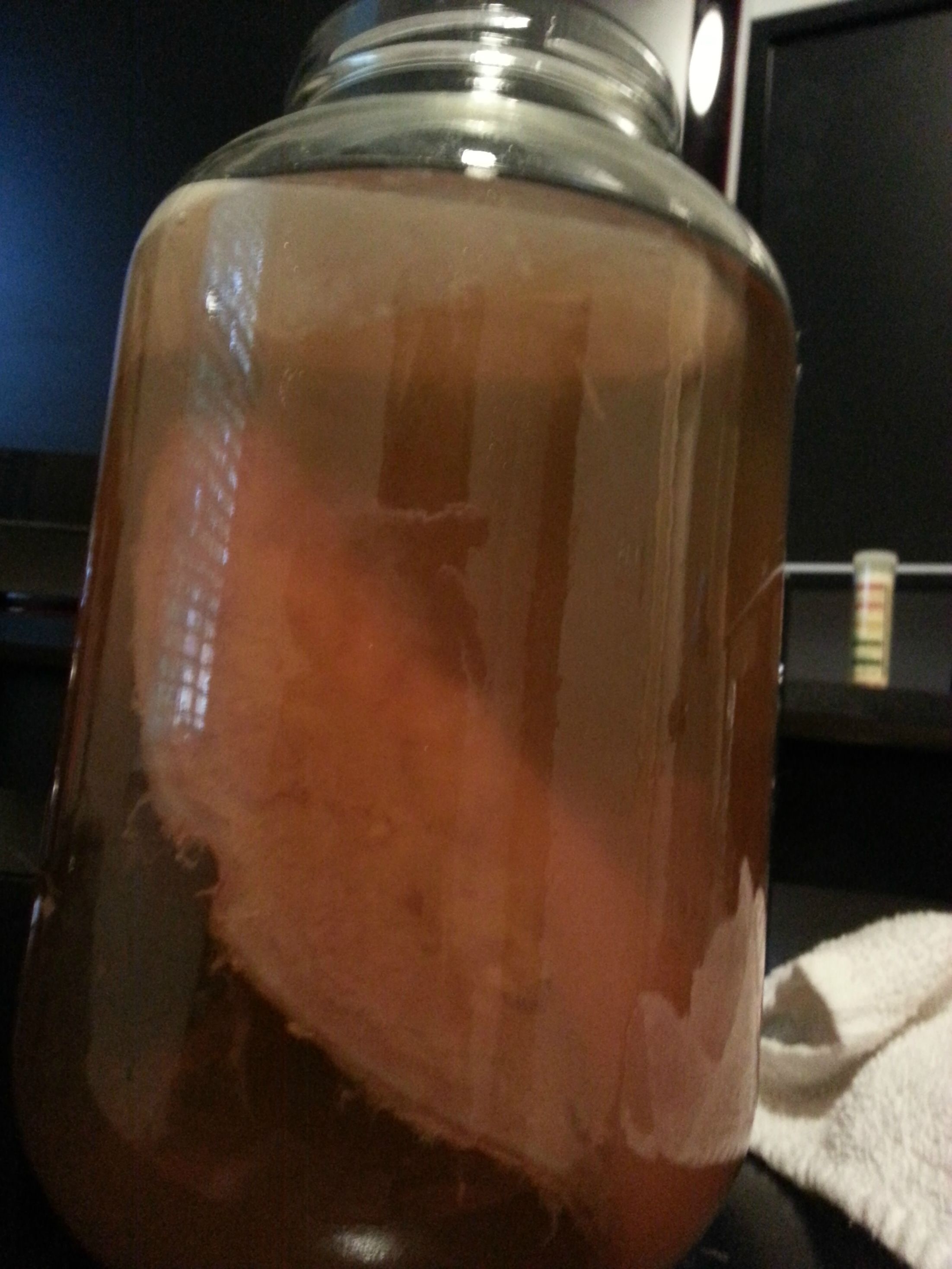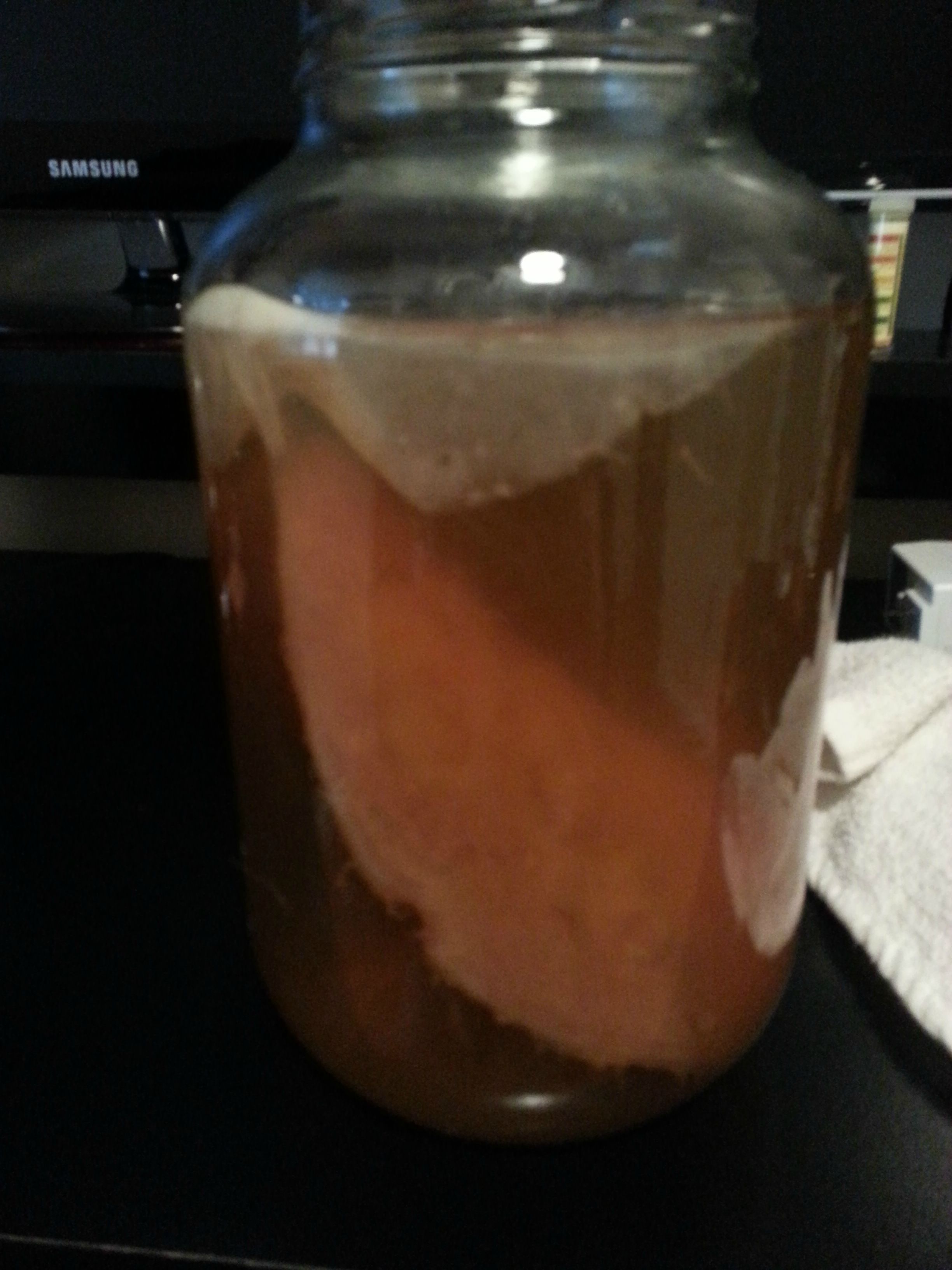Hey everyone, I'm a homebrewer but my wife has recently started to try to get into making kombucha. I know nothing about it and she just knows a little bit about it from her friend that told her how to do it and gave her the scoby(sp?)
She was looking online for a place to ask some questions and to my surprise she came across this site so I figured I would ask for her.
The first time she did it, it came out really sweet so she dumped it. From my experience as a homebrewer it seems like the fermentation stalled, but not sure if it's the same here. She used a 1 gallon pickle jar and put in 1 cup of sugar and then put a washcloth rag on top instead of the lid. I guess this functions similar to an airlock in homebrewing? Let's the CO2 out without oxygen getting in? Is oxidation a problem in making kombucha?
So here is her 2nd try and after 6 days we checked the pH level and it's probably somewhere between 4 and 5. Her concerns are that the "baby separated from the mother" and that the "baby has a couple of white fizzy spots on it". She did move it around some though so that could be why.
Do these sound like logical concerns? I've attached some pictures.





She was looking online for a place to ask some questions and to my surprise she came across this site so I figured I would ask for her.
The first time she did it, it came out really sweet so she dumped it. From my experience as a homebrewer it seems like the fermentation stalled, but not sure if it's the same here. She used a 1 gallon pickle jar and put in 1 cup of sugar and then put a washcloth rag on top instead of the lid. I guess this functions similar to an airlock in homebrewing? Let's the CO2 out without oxygen getting in? Is oxidation a problem in making kombucha?
So here is her 2nd try and after 6 days we checked the pH level and it's probably somewhere between 4 and 5. Her concerns are that the "baby separated from the mother" and that the "baby has a couple of white fizzy spots on it". She did move it around some though so that could be why.
Do these sound like logical concerns? I've attached some pictures.




























![Craft A Brew - Safale BE-256 Yeast - Fermentis - Belgian Ale Dry Yeast - For Belgian & Strong Ales - Ingredients for Home Brewing - Beer Making Supplies - [3 Pack]](https://m.media-amazon.com/images/I/51bcKEwQmWL._SL500_.jpg)


































